10-06-2024 - Energy systems - The prevalence[EN]-[IT]
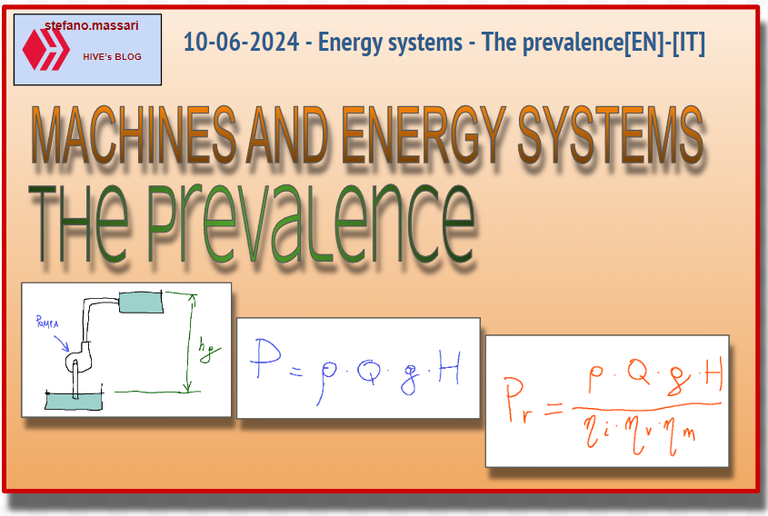
~~~ La versione in italiano inizia subito dopo la versione in inglese ~~~
ENGLISH
10-06-2024 - Energy systems - The prevalence[EN]-[IT]
The prevalence
IN physics we have a quantity called prevalence, this is useful when studying energy systems in which the operating machine is a fluid pump.
The head measures the pressure that a pump is able to give to a circuit and consequently helps us understand how capable this pump is of overcoming pressure losses and differences in height.
Below is the diagram of a fluid pump
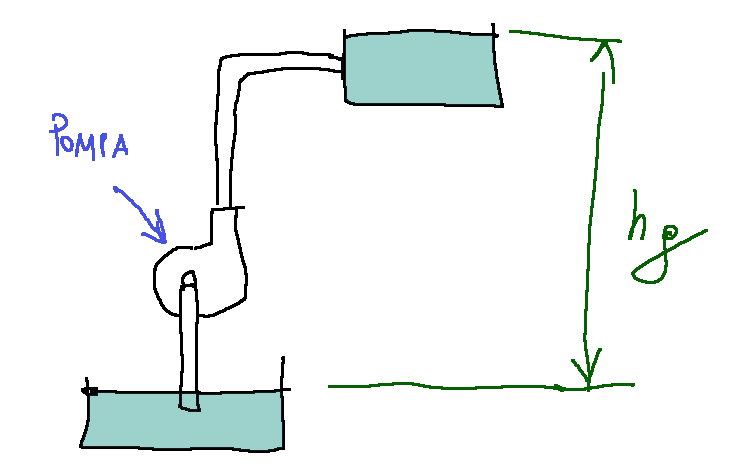
Performance of a pump
To calculate the performance of a pump we need to know the following three parameters:
-The prevalence of H
-The volumetric flow rate Q
-The density of the working fluid ρ
To calculate the power transferred from the pump to the fluid we can use the following formula.
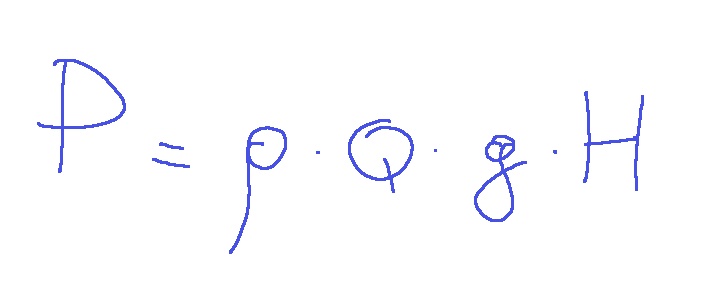
Losses and Returns
In order to determine the power Pr that must be supplied to a pump we must also think about overcoming the various losses that exist along the circuit or in the energy system.
Fluid dynamic losses
For fluid dynamic losses we must take into account the hydraulic efficiency.
Below is its mathematical expression:
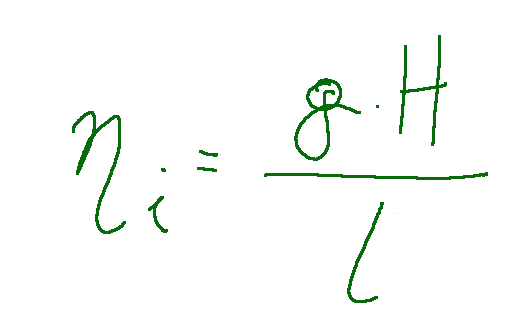
Losses due to leaks through the seals and recirculation inside the impeller
These losses are taken into account in the volumetric efficiency which is expressed with the following formula:
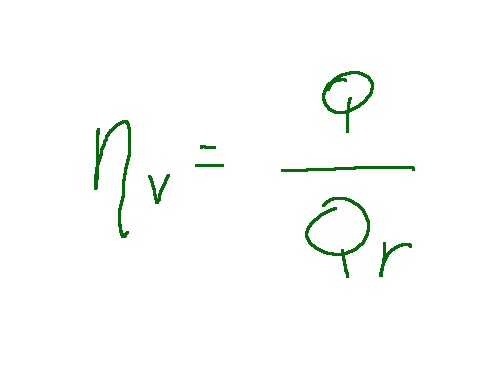
Losses due to friction and losses in transmissions
To identify the incidence of these losses we can calculate the value of the mechanical efficiency.
Below is the mechanical efficiency formula.
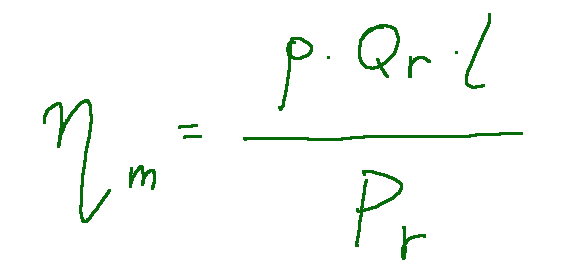
Power absorption of a pump
The absorbed power of a pump or real power is therefore equal to the power transferred from the pump to the fluid divided by the various efficiencies.
Below is the formula for the real power of a pump
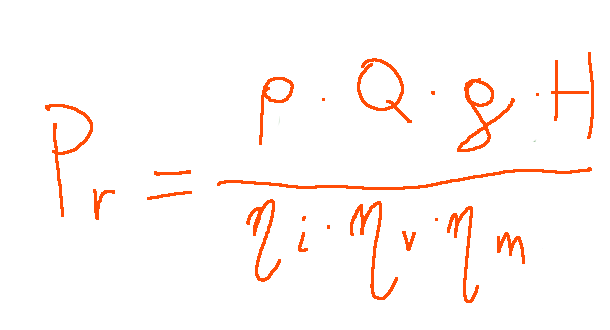
Efficiency of a pump
The efficiency of a pump measures the efficiency with which this operating machine transforms the energy supplied into energy useful for moving a fluid.
The efficiency of a pump is the ratio between the useful power, i.e. the hydraulic power supplied to the fluid and the power absorbed by the pump, i.e. the electrical or mechanical power supplied to the pump to achieve the objective of pumping the liquid.
The formula for the efficiency of a pump is as follows:
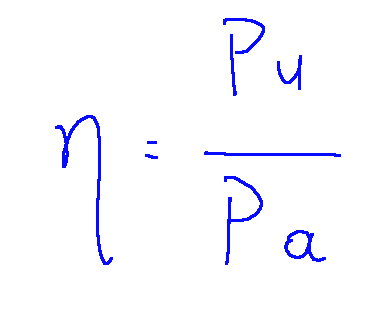
Conclusions
the power that a pump imparts to the fluid is less than the power it absorbs due to the various losses.
Request
Have you ever calculated the efficiency of a hydraulic pump?

ITALIAN
10-06-2024 - Sistemi energetici - La prevalenza[EN]-[IT]
La prevalenza
IN fisica abbiamo una grandezza che si chiama prevalenza, questa è utile quando si studiano dei sistemi energetici in cui la macchina operatrice è una pompa per fluidi.
La prevalenza misura la pressione che una pompa riesce a dare ad un circuito e di conseguenza ci fa comprendere quanto questa pompa si in grado di vincere le perdite di carico e il dislivello.
Qui di seguito lo schema di una pompa per fluidi

Prestazioni di una pompa
Per calcolare le prestazioni di una pompa abbiamo bisogno di conoscere i tre parametri seguenti:
-La prevalenza H
-La portata volumetrica Q
-La densità del fluido di lavoro ρ
Per calcolare la potenza trasferita dalla pompa al fluido possiamo usare la seguente formula.

Perdite e rendimenti
Per poter determinare la potenza Pr che deve essere fornita ad una pompa dobbiamo pensare di vincere anche le varie perdite che ci sono lungo il circuito o nel sistema energetico.
Perdite fluidodinamiche
Per le perdite fluidodinamiche dobbiamo tenere conto del rendimento idraulico.
Qui di seguito la sua espressione matematica:

Perdite dovute alle fughe attraverso le tenute e del ricircolo all'interno della girante
Queste perdite sono tenute conto nel rendimento volumetrico che si esprime con la seguente formula:

Perdite dovute agli attriti e alle perdite nelle trasmissioni
Per individuare l'incidenza di queste perdite possiamo calcolare il valore del rendimento meccanico.
Qui di seguito la formula del rendimento meccanico.

Potenza assorbita di una pompa
La potenza assorbita di una pompa o potenza reale è quindi uguale alla potenza trasferita dalla pompa al fluido fratto i vari rendimenti.
Qui di seguito la formula della potenza reale di una pompa

Rendimento di una pompa
Il rendimento di una pompa misura l'efficienza con cui questa macchina operatrice trasforma l'energia fornita in energia utile per spostare un fluido.
Il rendimento di una pompa è il rapporto tra la potenza utile, cioè la potenza idraulica fornita al fluido e la potenza assorbita dalla pompa, cioè la potenza elettrica o meccanica fornita alla pompa per il raggiungere l'obiettivo di pompaggio del liquido.
La formula del rendimento di una pompa è il seguente:

Conclusioni
la potenza che ina pompa imprime al fluido è inferiore alla potenza che assorbe a causa delle varie perdite.
Domanda
Avete mai calcolato il rendimento di una pompa idraulica?
THE END
Congratulations @stefano.massari! You have completed the following achievement on the Hive blockchain And have been rewarded with New badge(s)
You can view your badges on your board and compare yourself to others in the Ranking
If you no longer want to receive notifications, reply to this comment with the word
STOPI’ve never calculated the efficiency of a pump
Thanks for the topic and formula though
Hydraulic pump! I don’t know whether the water pump at our house is a hydraulic one! It should be better to have a hydraulic pump but it’s very expensive!
I’ve never calculated this and know nothing about pump
Thanks for the explanation
!discovery 35
This post was shared and voted inside the discord by the curators team of discovery-it
Join our Community and follow our Curation Trail
Discovery-it is also a Witness, vote for us here
Delegate to us for passive income. Check our 80% fee-back Program